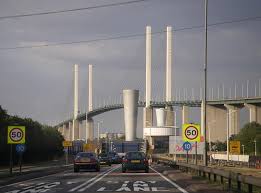
Introduction
The Dartford Crossing, comprising two tunnels and a bridge, serves as a critical transport link between Kent and Essex. It facilitates the movement of over 150,000 vehicles daily, making it one of the busiest road crossings in the United Kingdom. Its function is vital not only for commuters but also for freight traffic supporting the economy. Recent developments and maintenance issues have raised concerns about its future capacity and reliability, making it essential for road users to stay informed.
Current Developments
The latest updates regarding the Dartford Crossing involve ongoing maintenance and improvement works aimed at enhancing traffic flow and safety. Highways England has announced several initiatives to improve the condition of both the Dartford Tunnel and the Queen Elizabeth II Bridge. These include routine maintenance checks, resurfacing activities, and upgrading navigational signage. In July 2023, a 60-hour closure of one of the tunnels was scheduled to facilitate essential repairs.
In addition to maintenance, recent discussions among transport authorities regarding the introduction of charging changes have surfaced. Currently, vehicles crossing the Dartford Crossing are required to pay a toll, and there might be considerations for adjustments in rates or payment methods. The review aims to ensure that the toll remains fair while contributing to the improvement of the crossing infrastructure.
Importance for Commuters and Economy
The Dartford Crossing plays an essential role in the UK’s transport network, serving as a lifeline for many commuters who work across the River Thames. The potential for increased congestion due to maintenance closures highlights the importance of planning and alternate route consideration by drivers. Furthermore, the crossing is significant for freight transport, linking key ports and facilitating trade. Disruptions can have a cascading effect on supply chains, making effective management of vehicular traffic paramount.
Conclusion
As the Dartford Crossing continues to undergo necessary improvements, it remains vital for both daily commuters and the economy. The ongoing maintenance and potential toll adjustments signify important steps towards ensuring its operational efficiency. Stakeholders are urged to keep abreast of updates and plan accordingly to avoid disruptions. With the number of vehicles projected to rise in the coming years, the future of the Dartford Crossing will be critical for maintaining connectivity across this key transportation corridor.
You may also like

The Prince of Wales Bridge: Recent Developments and Significance

Understanding Glasgow Airport and Its Significance
